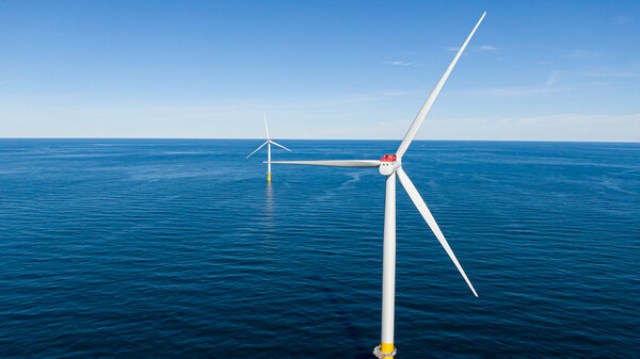The International Energy Agency (IEA) has raised concerns over the need for greater investment in the wind turbine manufacturing sector to prevent supply chain bottlenecks by 2030. Despite significant incentives in Europe, the United States, and Southeast Asia, global onshore wind manufacturing capacity is projected to reach 145 GW by 2030, only slightly above the anticipated demand for that year.
The situation is more pressing for offshore wind, with the IEA warning that without new manufacturing projects, delays could hinder offshore wind projects, especially in EU member states that are aiming for ambitious 2030 wind energy goals.
The IEA also forecasts a doubling of the global wind capacity expansion rate between 2024 and 2030, compared to the previous period from 2017 to 2023. However, the rapid increase in wind and solar photovoltaic (PV) generation is leading to higher rates of energy curtailment, especially in countries where grid investments and system integration are lagging. Curtailment rates in countries like Chile, Ireland, and the United Kingdom have recently reached between 5 percent and 15 percent.
To address these challenges, the IEA emphasizes the need for more flexible energy solutions, including long-term storage and large-scale demand response systems, alongside the growing investment in battery storage. Solar and wind power penetration could approach 70 percent by 2030 in countries such as Chile, Germany, the Netherlands, and Portugal.
The report also highlights that Europe and the United States will account for nearly 30 percent of global renewable power generation by 2030, with Brazil and India contributing an additional 5 percent each. India’s rapid growth in renewable energy is expected to more than double its share, making it the fastest-growing large economy in this sector.
Onshore wind installations rebounded significantly in 2023, growing by 65 percent to 107 GW. This growth was primarily driven by expansions in China, with smaller increases in India. However, installations in Europe remained stable, while the U.S. saw a decline.
IEA has predicted a substantial growth in wind energy capacity by 2030, despite ongoing supply chain, inflation, and permitting challenges.
Onshore wind energy is expected to nearly double its cumulative capacity from 2017-2023 levels, reaching 846 GW by 2030. This surge will be driven by evolving policies, particularly in Europe, the United States, India, and other emerging economies, designed to adapt to macroeconomic changes and expedite project approvals.
Offshore wind is also set for a major expansion, with global capacity forecasted to quadruple over the next seven years, reaching 212 GW by 2030. The annual offshore wind market is projected to grow from 9.5 GW in 2023 to over 45 GW by the end of the decade. China is expected to lead this growth, contributing to half of the global offshore wind market expansion. Europe, meanwhile, is on track to achieve an annual market of nearly 18 GW by 2030, while new markets in the United States, Japan, and South Korea are poised to reach gigawatt-level capacities.
China’s dominance extends to renewable energy manufacturing, where it maintains a surplus of solar PV and wind capacity at competitive costs. The IEA notes that this excess manufacturing could accelerate global growth if grid integration issues are addressed swiftly and rooftop solar PV systems are deployed more rapidly.
Baburajan Kizhakedath

